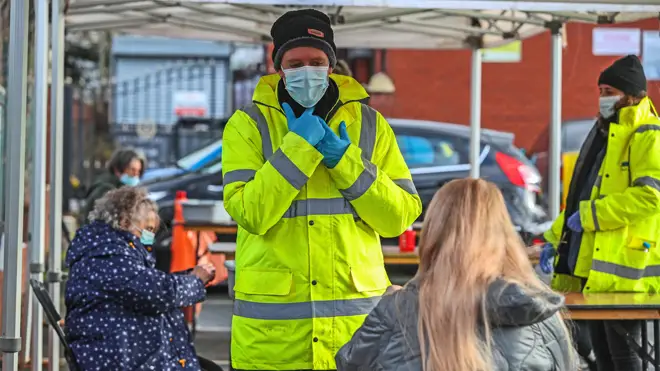
James O'Brien 10am - 1pm
10 February 2021, 07:20 | Updated: 10 February 2021, 10:15

Hundreds of thousands of clinically vulnerable people were not told to shield at the start of the coronavirus pandemic due to out-of-date records, according to a report.
Whitehall spending watchdog the National Audit Office (NAO) said a lack of contingency planning meant officials had to scramble to create from scratch a system to identify those who might need support while they were unable to leave their homes
In doing so, they had had to rely on hospital records that were weeks out of date or with missing or inaccurate telephone numbers, meaning some had to wait weeks before they were able to get deliveries of food or medicines.
Read more: Quarantine hotels: £10k fine and prison threat for hiding 'red list' visits
Read more: Nick Ferrari scrutinises Grant Shapps over "oppressive" 10 year travel sentence
A contact centre set up to reach those who had not registered for the scheme online or through an automated telephone line was unable to reach 375,000 people.

Shapps: 'Nobody should be going on holiday or travelling round UK'
Meanwhile, 126,000 people were contacted in error and wrongly advised to shield when they did not need to do so.
The Government originally announced on March 22 - just before the first national lockdown - that an estimated 1.5 million of those considered "clinically extremely vulnerable" (CEV) should stay home for the next 12 weeks.
However the NAO said that a 2016 exercise to test for preparedness for a flu pandemic codenamed Exercise Cygnus had not covered the need for vulnerable people to shield.
It meant there was no system in place to allow a fast "sweep" across all patient data to identify those who should be on the list and who may need support.
Initially, NHS Digital was forced to rely on hospital, maternity and prescribed medicines data - even though the hospital records were seven weeks out of date.
The first list identified some 870,000 people who were identified as CEV and were sent letters advising them to shield.
By April 12, NHS Digital had managed to identify a further 420,000 through the use of GP data while a further 900,000 were added to the list between April 18 and May 7, taking the total to 2.2 million.
In an attempt to ensure all those who were eligible for support registered with the scheme - whether they needed help or not - the Government commissioned a contact centre to reach those who had not signed up.
However, of the 1.8 million names they were given, 375,000 could not be reached because of missing or inaccurate phone numbers in NHS patient records, while a further 440,000 declined to register - in some cases hanging up because they thought it was a nuisance call.
In all, more than 510,000 people were supported through the scheme to the start of August at a cost to the taxpayer of £308 million - of which £200 million was spent on food boxes.
The NAO said that the Department of Health and Social Care was unable to say whether shielding led to fewer deaths or cases of serious illness among the clinically vulnerable - although it was "likely" that it helped.
The head of the NAO, Gareth Davies, said: "The shielding programme was an important response to support clinically extremely vulnerable people asked to shield.
"However, challenges pulling together data meant it took time to quickly identify those needing to shield, and therefore eligible for support."
Meg Hillier, the chair of the Commons Public Accounts Committee, said: "Government quickly identified the need to support vulnerable people at the onset of the pandemic. But with nothing prepared, Government had to build its shielding programme from scratch.
"Nearly a million people were not eligible for support for weeks while the Government scrambled to gather basic information. Meanwhile, too many vulnerable people were left confused by Government's mixed messages."